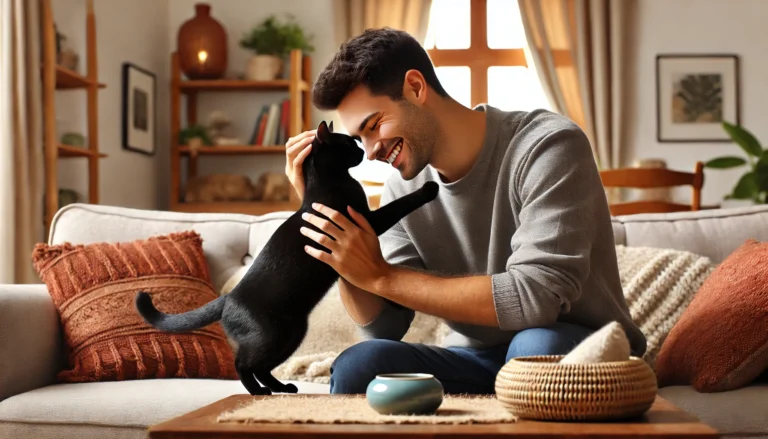How to Litter Train a Kitten: A Great Guide

Introduction to How To Litter Train a Kitten:
Bringing a new kitten home is one of the joys of life, but it comes with its set of responsibilities, one of which is litter training. Litter training your kitten is essential for cleanliness and convenience, and thankfully, kittens instinctively understand the concept of using a designated spot for elimination. This comprehensive guide provides detailed steps on how to litter train a kitten, ensuring a smooth and hygienic transition for your new furry friend.
Choosing the Right Supplies
1. Selecting a Kitten Litter Box
The first step in litter training is choosing the right litter box. For young kittens, opt for a small litter box with low sides to make it easy for them to get in and out. As your kitten grows, you can upgrade to a larger box. The general rule is to have one more litter box than the number of cats in your home.
2. Choosing the Best Litter for Kittens
Select non-clumping, unscented litter for younger kittens, as they tend to try eating the litter, and clumping litter can cause blockages in their digestive system. As they grow older, you can transition to clumping litter if preferred.
Steps to Litter Train Your Kitten
3. Introducing Your Kitten to the Litter Box
Place the litter box in a quiet, low-traffic area where your kitten feels secure. After meals, waking up, or playing, gently place your kitten in the litter box. This helps them associate the feel of litter with the act of elimination.
4. Encouraging Proper Use
Whenever your kitten uses the litter box correctly, offer plenty of praise and possibly a treat. This positive reinforcement helps them understand that using the litter box is a good behavior. If your kitten has an accident outside the litter box, do not punish them. Instead, clean the area thoroughly to eliminate the smell and discourage them from returning to that spot.

Common Questions About Litter Training
5. When Do Kittens Start Using the Litter Box?
Kittens typically start using the litter box as early as 4 weeks old. By this age, they naturally begin to seek out sandy or granular surfaces to eliminate.
6. How Long Does It Take to Litter Train a Kitten?
Most kittens will understand the basics of litter training within a few days, but some may take a few weeks to fully get the hang of it. Patience and consistency are key.
Troubleshooting Litter Training Issues
7. Kitten Not Using Litter Box
If your kitten is reluctant to use the litter box or is having accidents, consider the placement of the box. Ensure it’s in a quiet, accessible location and not near their feeding area. Also, maintain cleanliness—scoop the litter daily and change it weekly.
8. Choosing the Right Number of Litter Boxes
Having multiple litter boxes can prevent issues with accessibility, especially in a multi-story home or where multiple cats are present. Remember, the formula is one litter box per cat, plus one extra.
Advanced Tips
9. Transitioning to Different Types of Litter
Once your kitten is comfortably using the litter box, you might want to transition to a different type of litter. Do this gradually by mixing the new litter with the old type to allow your kitten to adjust.
10. Teaching Older Cats
If you’re introducing a litter box to an older cat or a previously outdoor cat, the same principles apply, but you might need a bit more patience and encouragement.
do you know
DHPP Vaccination for Dogs, When it comes to keeping your furry friend healthy and safe, the DHPP vaccine, also known as the 5-in-1 vaccine or the five-way shot for dogs, is an essential tool in your pet care arsenal.
Conclusion of How To Litter Train a Kitten
Litter training a kitten is a straightforward process, especially when approached with patience and understanding. By setting up the right environment and using positive reinforcement, most kittens quickly learn to use the litter box consistently. Remember, each kitten is unique, so they might learn at different paces. Follow these guidelines, stay consistent, and soon your kitten will be using their litter box like a pro, making this aspect of pet ownership both easy and rewarding.
What is the fastest way to litter train a kitten?
Place the kitten in the litter box after meals and naps, and consistently keep the litter box clean and accessible.This is the how to litter train a kitten
How long can it take to litter train a kitten?
Most kittens learn to use the litter box within a few weeks, but the exact time can vary depending on the individual kitten.
Do kittens litter train themselves?
Kittens have a natural instinct to bury their waste and will often start using a litter box with minimal training.
How to introduce of how to litter train a kitten?
Gently place the kitten in the litter box and scratch the litter with their paw to show them what to do.
How often do kittens poop?
Kittens typically poop 1-2 times per day, but this can vary based on diet and age so you want to learn about how to litter train a kitten.
Can I use sand as cat litter?
Yes, sand can be used as cat litter, but it doesn’t clump like commercial cat litter and may not control odor as effectively and you learn more about how to litter train a kitten
Can I use rice as cat litter?
Using rice as cat litter is not recommended as it does not clump, can develop an odor, and may attract pests if it becomes damp.
Can I use flour as cat litter?
Flour is not suitable for cat litter as it can form a pasty substance when wet and does not manage odors or moisture effectively.






